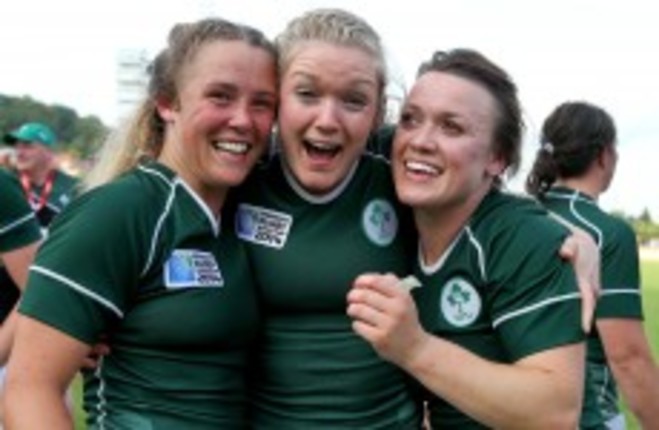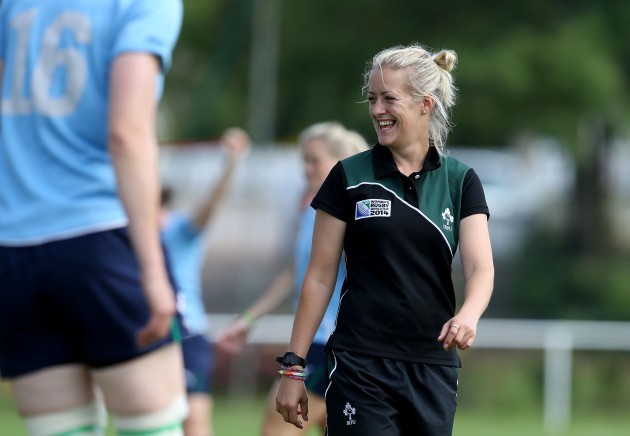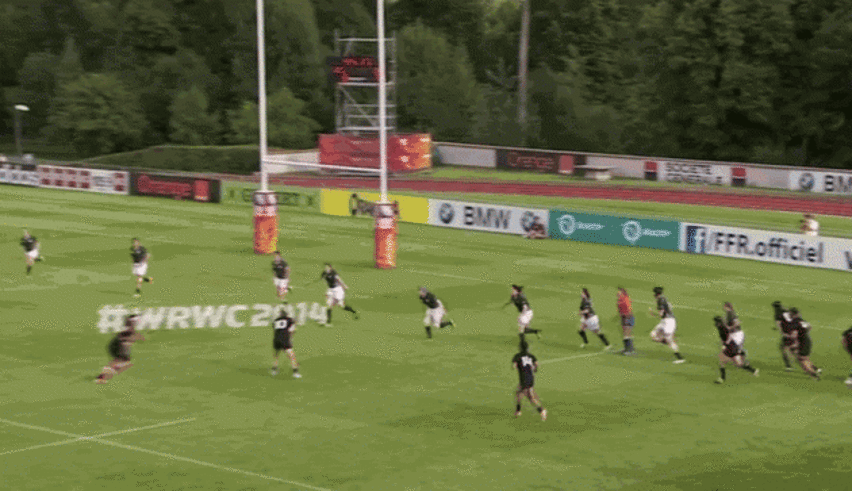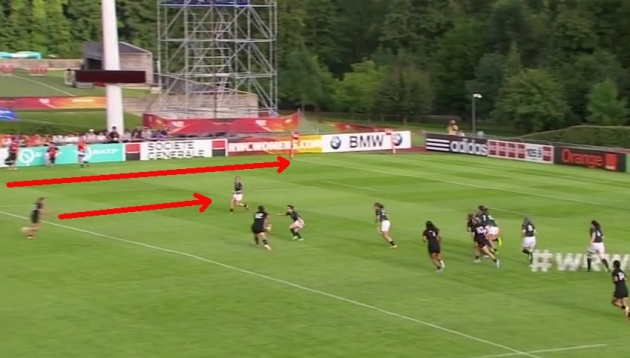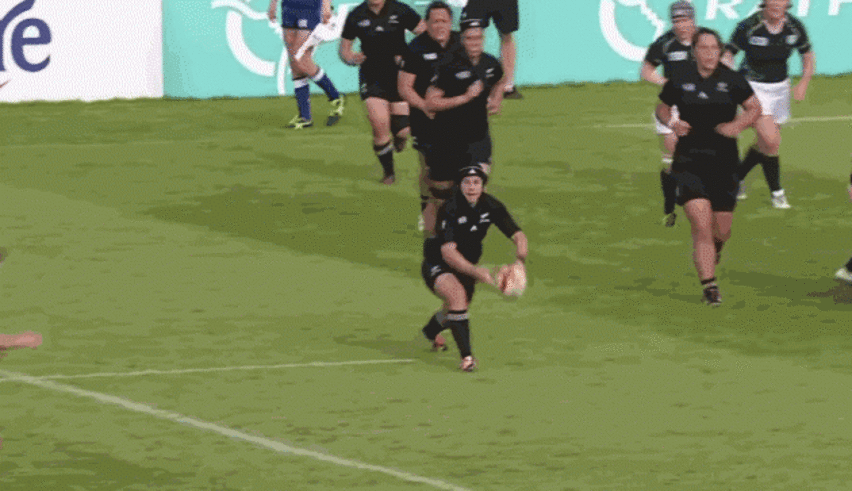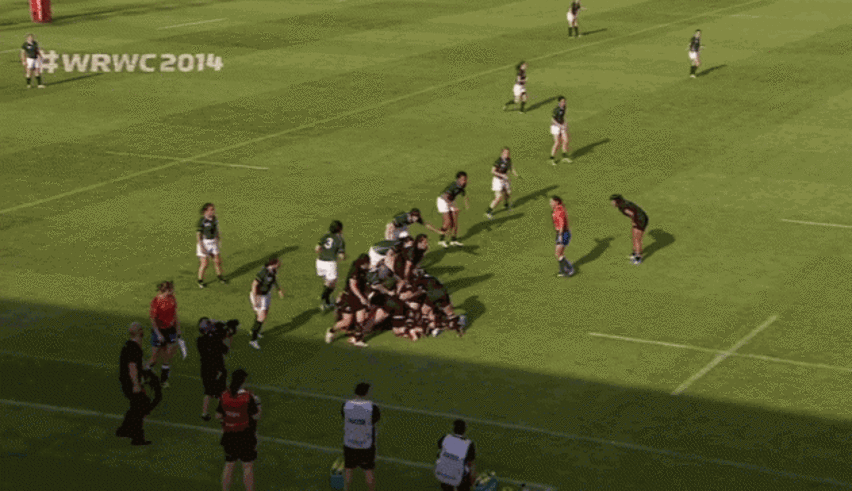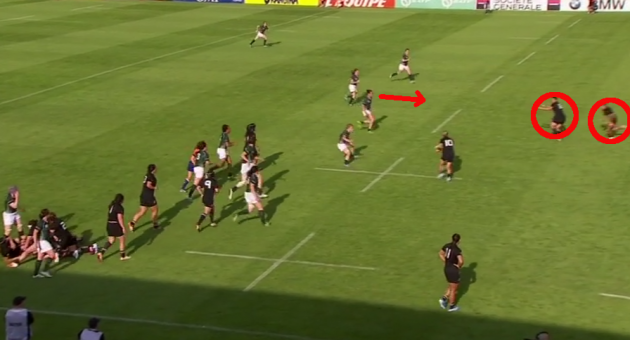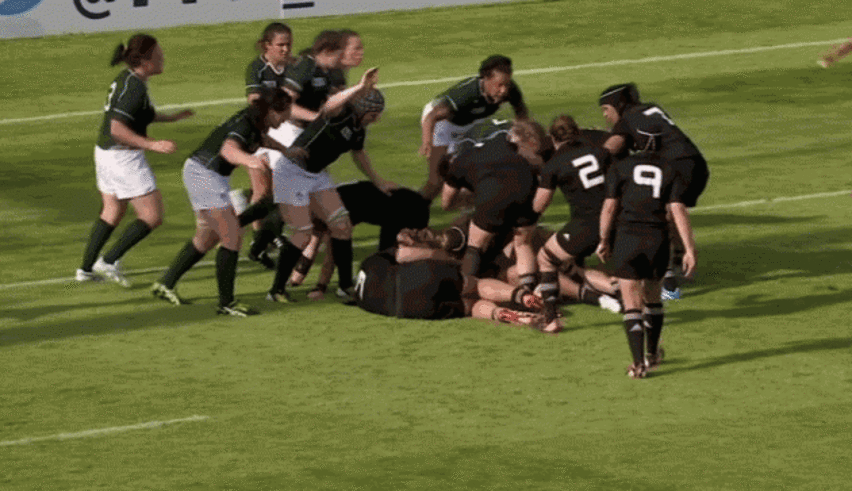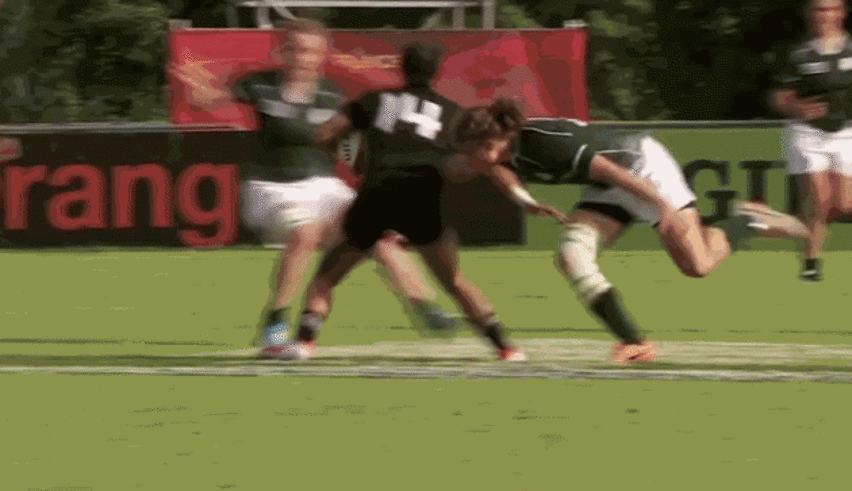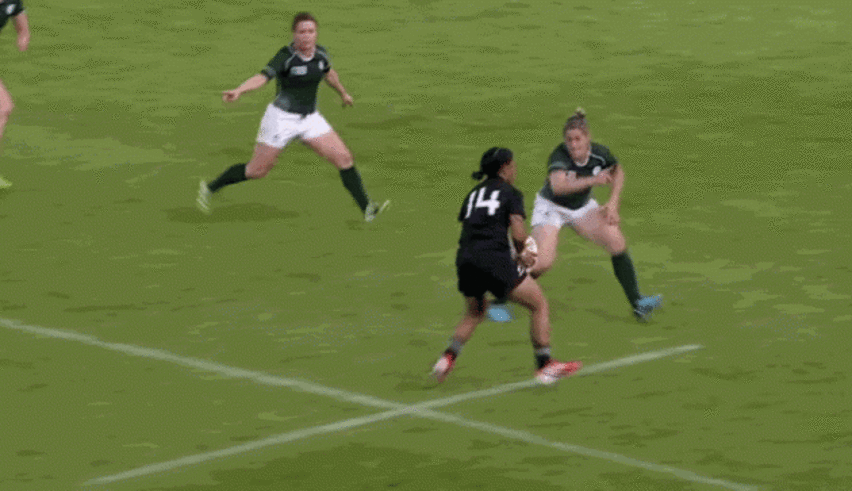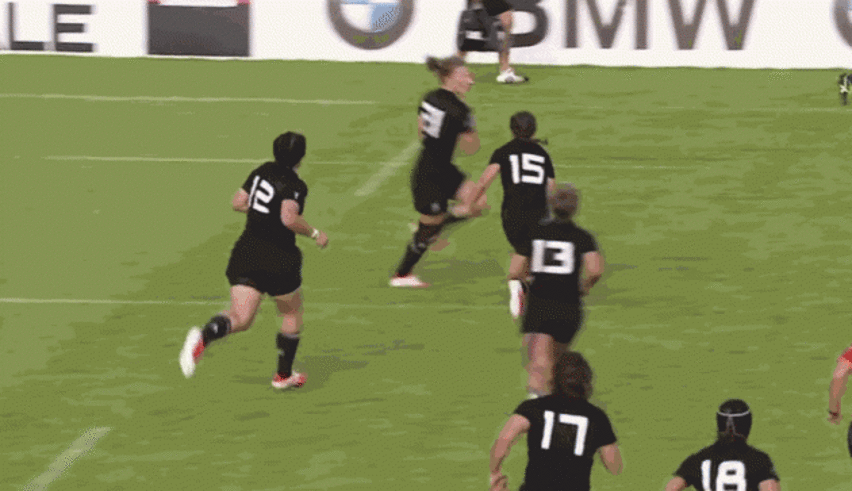IRELAND WOMEN PULLED off one of the finest results in the history of the game on Tuesday, as they beat a New Zealand team that had been undefeated in the World Cup since 1991.
The reaction from the Fiona Coghlan-captained side since their victory has been one of the most encouraging aspects of the success; the Irish players and their coaching staff have repeatedly stated that their historic victory means nothing if it is not backed up.
While that slightly belittles the scale of Ireland’s achievement, it speaks volumes of the confidence and ambition in this group. The 2013 Grand Slam champions believe that they are good enough to compete against and beat the very best in world rugby.
Tuesday’s win demonstrated that Ireland are more than capable of doing exactly that, as they produced a performance that was, at times, dominant against New Zealand. In this piece we look at the defensive effort, while the attack is addressed in a separate article.
Conditioning
Before we delve into Ireland’s win, it’s worth noting the impressive fitness of this team. Speak to any of the players and they will sing the praises of strength and conditioning coach Marian Earls.
It’s been clear to see why in Ireland’s opening two games of the World Cup, as they have bettered the USA and New Zealand in terms of conditioning. Ireland’s skills have stood up well in the closing stages of the games, while their ability to scramble in defence was particularly evident against the Kiwis.
“We’re definitely fitter and faster, in the best shape we’ve ever been in,” says fullback Niamh Briggs. “Marian Earls is unbelievable at her job. I can’t rate her highly enough, she just gets the best out of players.
“We had targeted New Zealand, you know they have tired a lot in their last few games after about 60 minutes.”
Head coach Doyle revealed before the tournament that Ireland had “put a huge emphasis on the players’ decision-making under pressure while fatigued” in their training and preparation for France, something that helped Ireland to victory against the Black Ferns.
Briggs points to the work of former S&C coach Ross Callaghan as having laid foundations, with Earls’ diligence bringing “the package to the next level”. As part of the 11-strong backroom staff for Ireland, Earls is also a key component of the off-field culture.
“We’re always giving out to her that she’s minus craic, a little bit of anti-banter, but she’s great fun,” says Briggs. “She’ll take the banter with it, but she has that ability to get the best out of players.”
Defence
While two impressive tries and Briggs’ place-kicking racked up the 17 points Ireland scored at Marcoussis against the Kiwis, it was their defence that has deservedly been the focal point of much praise in the aftermath of the game.
Ireland’s defensive effort in the ‘championship minutes,’ before and after half-time, was perhaps the key to their win. The Black Ferns greatly stepped up their efforts and accuracy in that period, but Ireland held firm and prevented a second, damaging conceded try.
While New Zealand did manage stretch the Ireland defence at times, and even break through the first-up line on a number of occasions, Doyle’s side were superb in scrambling and reacting to those threats.
We see one such example in the GIF above, as New Zealand flash the ball wide through the hands from right to left. The Kiwis’ attack did look to shift the ball to the wings quite often on Tuesday but, as in this case, Ireland dealt with the tactic expertly.
Essentially, when the ball gets to inside centre Amiria Rule’s hands, the Black Ferns have created a 3-on-2 with wing Honey Hireme lurking on the touchline, out of shot in the image below.
It’s the superb work of Ireland’s world-class outside centre Lynne Cantwell that means right wing Ashleigh Baxter doesn’t have to bite in. Cantwell drifts wonderfully to get her tackle in on Kiwi fullback Selica Winiata, in turn allowing Baxter to smash Hireme one tackle out.
Richmond centre Cantwell is a vital part of Ireland’s defence, marshaling those outside channels with intelligence and making strong decisions in the centre of the field.
The example above may seem like quite a straightforward tackle, but that would be to ignore the ball-carrying options presented in front of Cantwell. The 32-year-old read New Zealand’s attack wonderfully all afternoon, demonstrating the value of having analysed the Kiwis’ attack in depth in the run-up to the game.
In the image below, we can see the options for playmaker Rule to pass to circled, while there is also the threat of the centre carrying herself and the possibility of slipping a short pass to the trailing Hireme on her right shoulder.
But Cantwell has her head up, reading the play rather than ‘ball-watching’ Rule; the Ireland centre is scanning the options in front of her, processing the information in a split-second and then making a strong, informed decision.
While the intention is to highlight Cantwell’s strong defensive performance here, her teammates carried their duties with similar competence. Intelligent decision-making, the ability and desire to work hard on the drift, and technical excellence in the tackle were hallmarks of the Irish defence.
We get a similar second example in the clip above, as out-half Nora Stapleton makes a good read in midfield to assist in the tackle. Again, it’s not spectacular, but it is about basics done well [head up, trusting the inside defender, making a good decision].
New Zealand struggled to break Ireland down in phase play for much of the opening 50 minutes or so, and much of that was down to smart play from the Irish defence. Of course, a monumental work rate was helpful too.
The hit above from substitute Jenny Murphy ends a remarkable passage of New Zealand attack, which went all of 60 metres over 21 phases, with a total ‘ball in play’ time of 2 minutes and 49 seconds.
While Ireland gave up lots of yards in defence, their continued effort in that block was incredible, showing off their sheer motivation to tackle and the fitness we referred to above.
Earlier in the same passage of play, Alison Miller made the last-ditch, one-on-one tackle on Renee Wickliffe that we see below. After 18 or so preceding phases, the Portlaoise wing delivers a a skillful contribution under fatigue and under great pressure.
As an aside, it’s worth nothing the performances of Ireland wings Miller and Baxter in the two games at this World Cup so far. While both are dangerous on the ball, the most impressive aspect of their performances has been their willingness to pitch in elsewhere.
Long gone are the days of wings simply waiting out wide to finish off tries; Miller and Baxter have hit rucks, made strong tackles, run clever support lines [as we'll touch on later] and generally racked up a heavy workload.
Those contributions are typical of an Irish team that has had no ‘passengers’ in the opening two games of the competition; every player on the pitch has had a telling impact.
NZ-esque breakdown
Another vital feature of Ireland’s defensive effort was their ability to steal the ball on the deck, something that New Zealand are perhaps more renowned for in the global game.
We touched on this aspect of Ireland’s abilities following the USA victory, but it was even more apparent and obvious on Tuesday. It is worth pointing out that the Kiwis stole ball from Ireland on the ground too, with Linda Itunu excellent at the breakdown.
One of the most important turnovers of the game was flanker Paula Fitzpatrick’s with literally one of the last actions of the first half. With New Zealand 8-7 ahead and pressing for what could have been a major psychological boost, the St. Mary’s back row came up trumps.
No. 8 Heather O’Brien makes an effective tackle on Kiwi captain Fiao’o Fa’amausili, before Fitzpatrick instantly recognises that the Black Ferns’ hooker is isolated. She jackals straight over the ball and is able to wrench it loose as New Zealand’s rucking players arrive a split second too late.
In the second half, Ireland’s attempts to steal the ball at the breakdown notably stepped up. We spoke about the tactical adaptability of Doyle’s side after the US game, and that was in evidence again as Ireland identified the Kiwis’ slight lethargy in getting to rucks.
The effort above from openside flanker Claire Molloy comes in the 41st minute, as Ireland set out their stall for the remainder of the half. The Bristol back row initiates the tackle high on Wickliffe, Coghlan arrives to complete the hit low on the wing’s body, and Molloy pounces for a clean turnover of possession.
Ireland have worked hard on their breakdown technique and decision-making in the last few years, and while there were a couple of penalty concessions in this area on Tuesday, they are rapidly improving.
It’s a duty that is shared around the Ireland team, not just for back rows like Fitzpatrick and Molloy. Above, Miller makes a wonderful turnover, while hooker Gillian Bourke [who is technically outstanding around the pitch] wins possession in the 78th minute below.
Hard work, belief
While systems, shapes, structures and techniques are of course essential elements of any defence, the key underlying principles must always be work rate and a desire to make tackles for one’s teammates.
Without those mental components, even the best-organised defences will be broken down as lactic acid builds in the legs and motivation slips. Ireland simply didn’t allow that to happen.
“It’s one of the classic things about the Irish Women’s team, sometimes different to other teams around the world,” explains head coach and defensive leader Doyle. “They are incredibly tight and they love working together.
“There’s no one bigger than the team. It’s a great thing to have and it seems to be quite unique to the Irish ladies. They’re known around the world as the hardest team to play against simply because of their team spirit.”
That willingness to work hard for each other – make the less-than-glamorous hits around the fringes of rucks, remain focused on midfield reads, and then drift hard when the ball has moved wide – was ultimately one of the main contributing factors to Ireland’s win.
In piece two, we look at the variety of Ireland’s attack against New Zealand, as well as their superb counter-attacking try in the second half.
